Fitosporin - instructions for use, reviews of the drug, rules of use

Vegetable growers and gardeners often face the problem of the appearance of diseases on cultivated plants, ornamental plantings and fruit trees.
Having invested a large amount of work, care and attention into their plantings, they do not want to lose the harvest and the spectacular appearance of the site.
In this they come to the aid of such a modern, practically safe drug Fitosporin, which actively fights many fungal plant diseases and serves as an excellent prophylactic agent.
Content:
- Characteristics of the composition and release form of Fitosporin
- Complete instructions for use of Fitosporin
- Reviews about the use of the drug
- Application for indoor plants
- How to dilute Fitosporin in powder and paste for treating seedlings
Characteristics of the composition and release form of Fitosporin
Currently, almost every summer resident knows about the purpose of this product, in what cases to use it, and how to apply it correctly. In general, this is not surprising, because Fitosporin is especially popular among amateur gardeners and owners of suburban areas.
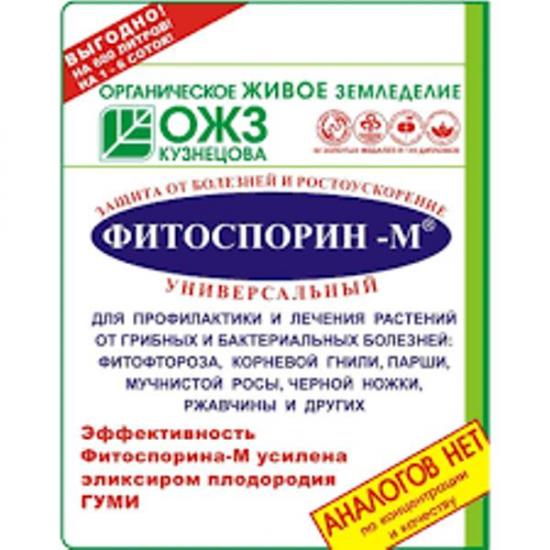
It is used:
- for the treatment and prevention of numerous fungal diseases
- for processing seeds before sowing
- treatment of the root system of seedlings
- to improve the shelf life and safety of the collected harvest
The product can be found on the market in various forms and for different types of crops. The active substance in it is common to each species, but the biological additives are different.
Fitosporin - M is a universal remedy; flower growers pay more attention to the fungicide for flowers, and vegetable growers pay more attention to the fungicide for tomatoes, potatoes and other crops.
The main active ingredient in the composition is a natural biofungicide, that is, it contains spores and cells of living bacteria of natural origin Bacillus suptilis (strain 26D).

Bacteria are resistant to frost, sun, and drought due to their ability to transform into spores.
An additional component of the drug is often Gumi. This substance is made from brown coal and contains nitrogen and phosphorus in large quantities.
In addition to Gumi, chalk is added - for viscosity, and some other substances.
The action of the product is due to the reaction of the bacterial strain with water, when added, the bacteria actively begin to develop and feed. Their waste products have an inhibitory effect on fungal spores and pathogenic bacteria.
Undesirable microflora is neutralized, and plants’ immunity to diseases. In the presence of the Gumi component, the drug has an additional stimulating effect on the roots, becomes a fertilizer and an immunomodulator.
The product is available in several forms for convenience, depending on the purpose of use.
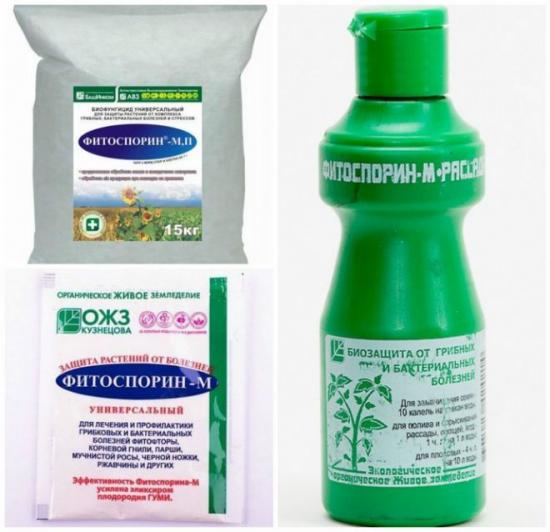
Powder
Packaged in disposable bags of 10 or 30 grams, with a titer of at least 2 billion bacteria per 1 gram.
Pasty substrate
The substrate is dark in color, packaged in a flat bag, the product weighs 200 g. 1 g of such substrate contains at least 200 million living spores.
Liquid
The concentration of living spores in 1 g of suspension reaches 1 billion. Fitosporin is a complex agent intended for absorption and distribution throughout the vessels of the plant.
Used to combat numerous plant diseases, or more precisely:
- with bacteriosis and black rot
- white spotting and brown rust
- powdery mildew and root rot
- downy mildew and snow mold
- various types of tuber rot
- Phomasis and late blight
- fruit rot and tracheomycosis
The effectiveness of application depends not only on the type of disease, but also on the type of crop itself; generally it ranges from 65 to 95%. This is quite a high figure. A positive point is also the ability to use the product both in open and closed ground, even in residential premises.
Bacterial cultures of Fitosporin can be preserved at temperatures ranging from -50 to +40 degrees, and do not lose effectiveness even after freezing and thawing.
But the most important advantage is the possibility of using them at any stage of crop development: growing season, appearance of buds, bloom, fruit formation.
It is safe even during fruiting, the manufacturer confirms this with its research.
It is necessary to use the composition only in cloudy gloomy weather, in the late evening, since Bacillus subtilis bacteria die under the influence of bright light.
Complete instructions for use of Fitosporin
The shelf life of the composition is up to 4 years. Used for spraying cuttings, seeds, pre-sowing soil preparation, and plant treatment.
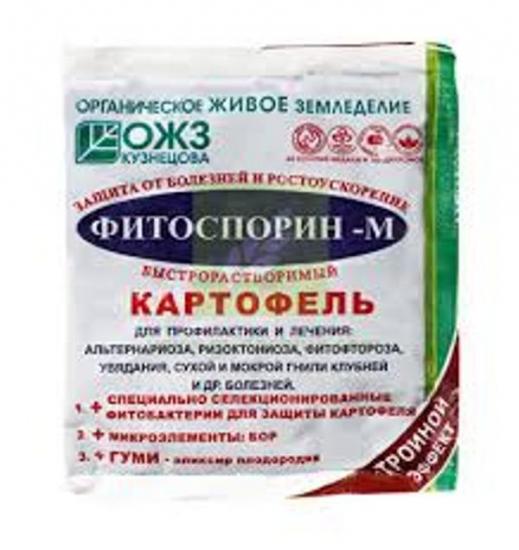
It is worth considering that after rain the film of the product partially becomes thinner and additional treatment is required after 1 - 2 weeks.If the drug was used as an irrigation, then repeated treatments are required less frequently: 1 time in 30 days for vegetable crops, and 2 times in 30 days for bushes and fruit trees.
For indoor flowers, once a month is enough.
The method of preparation and use depends on the type of substance used:
Powder
It has a white-gray tint and lasts for a long time without losing its qualities. The suspension is made a couple of hours before use.
For soaking bulbs or tubers: dilute 10 g of powder in half a liter of clean water. The resulting suspension is sprayed with up to 20 kg of planting material.
For pre-sowing treatment of seeds, soaking for one and a half to two hours is sufficient. Before sowing, dilute 1.5 g of powder (about half a teaspoon) in 100 ml of water.
Soaking roots from rot
Before planting, soaking the roots in the following emulsion for 2 hours is enough: 10 grams of the drug per 5 liters of water. The same composition can be applied to the planting circle.
By sheet
Potato: 10 gr. The powder is diluted in 5 liters of water and sprayed again after 14 days.
Cucumbers: 10 gr. for 5 liters of water. Three-time treatment is required every 10 - 12 days.
Tomatoes, eggplants, peppers. Mixed in the ratio: 5 g per 10 liters of liquid with re-treatment after 12 - 14 days.
For cultivating soil and soil in greenhouses
5 gr. The powder is diluted to a homogeneous state with 10 liters of water, the surfaces of the greenhouses are treated, and the entire soil is watered with the mixture.
Paste
The paste contains humyl acids, which are necessary for good growth and development of crops (GUMI).
Many summer residents are wondering: how to dilute Fitosporin in the form of a paste? The concentrate is prepared as follows: 200 gr.The paste is mixed until dissolved with 200 ml of water; it can be stored by first diluting it in the required amount of liquid before use.
Tubers and bulbs: 15 ml per 1 glass of water.
Soak seeds indoor plants, vegetables, flowers
2 drops of diluted paste in 1/2 cup of water, soaking for 2 hours before sowing is enough.
For cuttings: 4 drops of concentrate are diluted in 0.2 liters of water.
Leaf treatment of vegetable crops, berries, fruit bushes and trees: 3 tsp of working solution is mixed with 10 l of liquid, or 4 drops per 0.2 l of water. This composition is sprayed on crops and watered the soil.
Liquid
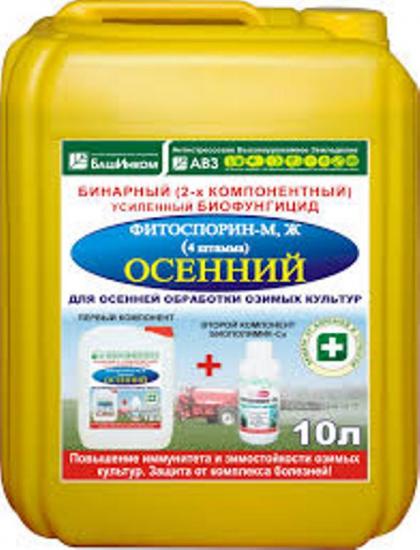
The prepared solution is used for spraying on the leaf and for spraying fruits before storing.
Prepare a working solution as follows: dissolve 10 drops in 0.2 liters of water. You can soak cuttings or seeds in the same solution. It is more gentle, therefore it is often used in indoor floriculture or greenhouses.
Consumption rates depend on the development of the disease:
At the beginning of the disease, the fungicide is diluted in a ratio of 1:20. After 10 - 12 days, re-treat.
In case of severe spread of fungus or rot, dilute 1 part of the concentrate with 2 parts of liquid and also spray again after 12 - 14 days.
Reviews about the use of the drug
Having studied a large number of reviews about the product on the Internet, we can make an unambiguous conclusion about the great love of gardeners and summer residents for this biofungicide. Negative reviews come only from those who processed the crops at the wrong time, or did not follow the instructions for use and used the wrong proportions.
For example, one dacha owner shares her opinion. I believe that Fitosporin is the best assistant of all time. I use it when soaking seeds, spraying during the growing season, for treating greenhouses and soil, watering indoor flowers.
I care about the health of my family and therefore I use a biological fungicide, it helps me a lot!
An interesting review from amateur vegetable growers who know firsthand what late blight is: The soil on my site is contaminated with late blight, so every year I have to treat all crops, vegetables and flowers at the slightest suspicion of the onset of the disease. This is not a magic cure, after using which the result is immediately visible; it will take some time for the plants to recover. I think this is Aibolit for plants.
Fitosporin is one of the most favorite helpers in the country. Seedlings treated with it acquire stable immunity to late blight and powdery mildew. Consumers consider paste to be a particularly economical option, while emphasizing its ease of use.
Treatment of indoor plants with Fitosporin helps protect green pets from mold and putrefactive diseases; violating the treatment rules is not recommended.
Application for indoor plants
It has toxicity class 4, that is, it is slightly toxic and can cause minor rashes or irritation of the mucous membranes in humans upon direct contact with the substance; it can be used in closed spaces, apartments, and private houses.
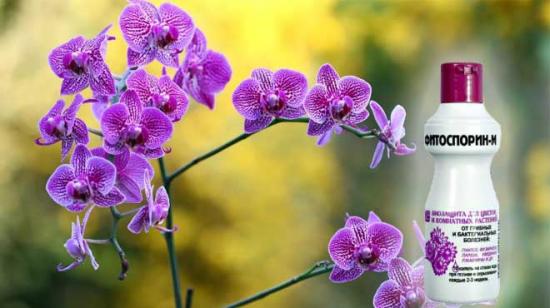
However, you should take precautions:
- All work is carried out with gloves.
- While working, you must not eat, drink or smoke.
- If the substance gets on the mucous membrane, immediately rinse the mucous membranes with running water.
- If the fungicide gets inside, it is necessary to induce a gag reflex (drink 3 - 4 glasses of liquid), and then take absorbent medications.
- Store away from food and drinks, out of the reach of children and animals.
Use of Fitosporin for indoor plants received a lot of positive feedback. The application is the same as for garden crops and depends on the form of the drug.
Phytosporin in powder form
For spraying flowers and other crops for preventive purposes, make a suspension of 1.5 g. powder and 2 liters of liquid. If the disease has already appeared, the same amount of powder is dissolved in 1 liter of liquid.
In paste form
10 drops are dissolved in 1 liter of water for treating leaves, and for watering soil in pots - 15 drops in 1 liter.
Liquid
The liquid is most suitable for spraying. There are many forms of fungicide, but they are all very similar in action, so the substance is most often used in the amount of 10 drops per 0.2 liters of water.
Treatment of seedlings with a biofungicide
For processing seedlings, the manufacturer produces a special type - Fitosporin-M Rassada.
It has a complex effect:
- disinfects planting material;
- increases the resistance of young plants;
- helps get rid of emerging diseases;
- affects the rate of germination;
- supports stable growth of seedlings;
- increases crop yield by at least 1-20%.
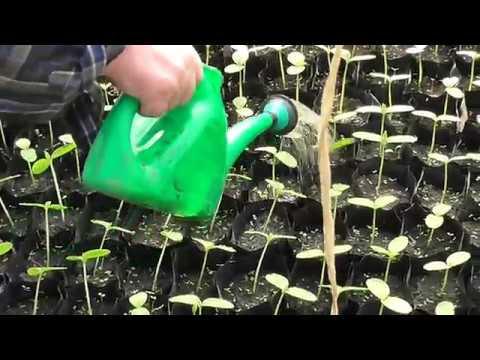
Scheme for using Fitosporin for young people seedlings as follows:
Alternating watering: 1 with phytosporin, 2 standard waterings as usual.
Once a week, the seedlings are thoroughly sprayed with the working composition from a spray bottle.
The composition is made at the rate of: 0.5 g of powder per 1 liter of water. Choose the amount of solution yourself, it depends on the number of planted seedlings. Shake the solution before use.With early use of Bacillus subtilis, immunity to various diseases increases: the bacteria penetrate and remain inside.
Time and progress do not stand still, so the biological fungicide Fitosporin was created to combat all kinds of parasitic fungi and bacteria.
The new generation drug is practically not harmful to humans and pets, but copes well with its tasks. A large number of plant growers and gardeners share their positive reviews about this useful tool. Almost every summer resident has such an assistant; he fights plant diseases and saves the harvest from loss or damage.
All the secrets of using phytosporin can be learned by watching the video:

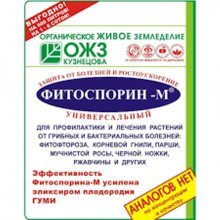
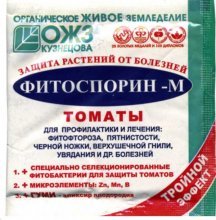
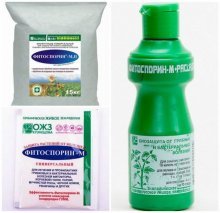

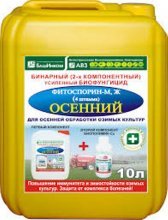
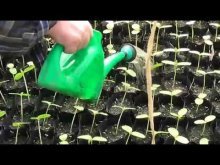
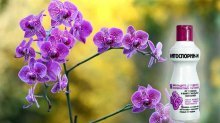

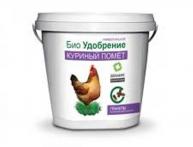
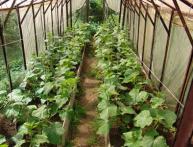
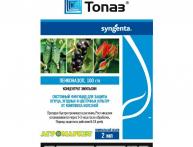
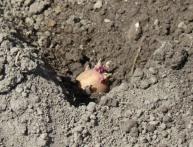
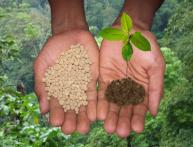
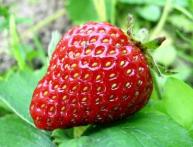
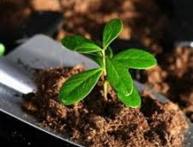
Comments
We also use this remedy to fight diseases. However, we try not to let this happen and spray in advance to prevent diseases and repel various pests.